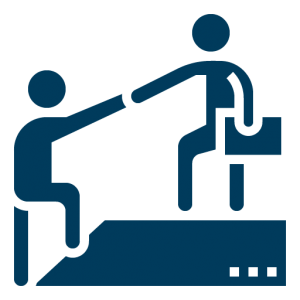— May 27, 2019

In today’s world, customers have more choice than ever. This has completely changed the way that they approach shopping and brand loyalty. Because they know that they have choices, many will walk away without a second thought if they think they can get a better deal elsewhere. This is called “churn,” or turnover.
Many businesses are taking steps to either minimize or mitigate the damages that churn does to their bottom line. But many aren’t taking advantage of one of the most powerful weapons against churn that there is: referral partners.
Referral partners can completely change the way that you approach lead generation and customer relations in general. Here are just some of the ways that referral partner leads can help you decrease churn and improve your revenue growth.
Leads from Referral Partners Are More Qualified.
It’s just a fact that referral partner leads are one of the highest quality partner leads. This is especially true when referral partner programs facilitate one-on-one interactions, like verbal referrals. By doing this, businesses can ensure that the leads that they bring on are ready to buy and understand what they can do for them.
What does this sort of method do for churn? For one thing, it makes sure that you aren’t just bringing in a bunch of leads for the sake of it. Methods like cold calling have a high turnover rate because they bring in leads that would never even consider using your product or service, or maybe they aren’t even in the market for it. Referral partners only reach out to people who have a vested interest in what you do.
Perhaps even more impressively, verbal referrals put a face to your brand. This makes the relationship feel far more personal, and makes them more loyal. This can be the difference between losing a client and keeping them.
The Sales Cycle Goes Faster.
There are multiple statistics that prove that referral partners speed up the sales cycle. This means that leads are coming in faster, and because we’ve already proven that referral partner leads are more qualified, that means more of them are turning into deals faster.
This does wonders for the churn rate. Because even though referral partner leads are less likely to leave when given a verbal referral, some still will. By shortening the sales cycle and bringing more leads in faster, those leads that do leave will get replaced more quickly. This helps businesses ensure that they’re bringing in more leads than they’re losing.
In addition, because the sales cycle is shortened, sales people will have more time to spend on new leads. This improves morale and only continues to positively affect your bottom line.
Referral Partners Improve Customer Experience.
This is one of the more unexpected perks of a referral partner model. But a referral partner model can improve the customer experience by putting the company in charge of their journey. This allows them to meet client needs and expectations early, giving them an exceptional experience overall.
Customers are loyal to businesses that give them a positive experience. A referral partner model can help your business achieve this, especially if you have referral partners who give verbal referrals.
This works because it makes the experience personalized. Suddenly, prospects aren’t just numbers or pixels on a screen. They’re treated as people and their problems are treated as important. This really makes a difference for their overall experience.
Automation Makes Referral Partner Channels Easier to Manage.
Now, all of this probably sounds difficult. As a business owner, you probably don’t have the time or the budget to keep track of things like verbal referrals, or sales cycles. But this doesn’t mean that you can’t leverage the power of referral partners to work for you.
Software like Amplifinity makes it easier than ever for your business to run, track and scale referral partner programs for increased revenue growth. By keeping all of these things running smoothly through automation, you can make sure that customers have a good experience, reducing churn and improving your bottom line.
Business & Finance Articles on Business 2 Community
(74)
Report Post







